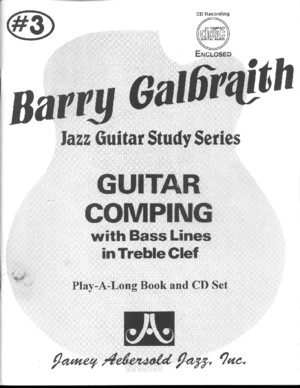

I've finished up 25 videos and still have just scratched the surface in this material. One thing I really like about Barry's method is 2 people going only "whole hog" would still sound different from each other as there is so much. With enough time and learning, a player doing each would have plenty of material from which to make a fully realized, mature improvising style. You could steal little bits from any of Barry Harris' ideas, or you could go whole hog and say you are just going to use his method only. Improvisers use material from different sources and blend them all together along with their own ideas to make improv decisions and make their own style. I was wondering how you suggest to BEST utilize these posts?ĭo you recommend sticking with one video until you “get it together” or rotating through them? The material presented easily implies a lifetime journey.īarryI don't think there is any "correct" way to do this. I play lots of jazz with a trio, alone and also guided by a wonderful and gifted guitar jazz combo teacher.

It encourages musicians to create original phrases based, in part, on the cross-fertilization of rhythmic, melodic, and harmonic models embodied in the rules Harris promulgates.”Įxcerpts from ‘Thinking in Jazz’, by Paul F.What a Wonderful collection you have generously posted on the Cafe.
THE BARRY HARRIS HARMONIC METHOD FOR GUITAR DOWNLOAD HOW TO
“A list of Harris’ graduates reads like a Who’s Who of Jazz among them are Paul Chambers, Curtis Fuller, Joe Henderson, Lonnie Hillyer, Yusef Lateef, Hugh Lawson, Kirk Lightsey, Charles McPherson, and Doug Watkins.” “Harris’ (method) is unique in both its emphasis and detail, for it teaches students precisely how to transform the (basic theoretical) elements into credible phrases and focuses as much upon the creative processes of improvisation as upon its products, effectively clarifying the relationship between theory and performance practice in the jazz tradition.” “Harris’ theory is an expansive generative method. Or is it the other way around? In any case, Barry’s sense of time, motion, and rhythm is absolutely impeccable.” “I’ve always thought that if Charlie Parker had played piano, he would sound exactly like Barry Harris. He is a living and brilliant extension of Bud Powell.” “I guess you could say Barry Harris is one of the very last of the bebop purists that we have on piano. I am confident that guitarists everywhere who are fortunate enough to pick up this book will thank him again, and again. Having had the pleasure of seeing Alan grow musically over the past 20 years, I am delighted that his insightfulness and hard work have found their way into a form that others can benefit from. Suddenly the musical ceiling gets raised and points us back to the purpose behind this book. It’s not that the classical folks don’t play chords, they just know something about getting from one to the next in an unobvious manner. When was the last time you listened to the symphony, for instance, and said oh yeah, Am7b5 – D7. In fact, I prefer to think – movement-to-movement – as opposed to chord to chord. As well, one realizes that the interesting spots in music, whether you are comping, harmonizing a melody or writing an arrangement, are the places in between the chord symbols. The “mover” on the other hand, understands that chords come from scales and thereby learns to approach chording in a more fluid fashion. These vertical groups of notes are “hit” or “struck” on the instrument – with no thought to creating movement. The “hitter” sits up and works out a couple of beautiful sounding voicings for each kind of chord (or worse, learns someone else’s from a method book) – and from that point on, plays them exactly the same way. Either one becomes a “hitter” or, one becomes a “mover”. Imagine, a system for learning jazz harmony that actually embraces the concept of improvisation.Īs I see it, there are two paths for a chord player to go down.

What you will find herein are the structural components, as mapped out and developed by jazz giant Barry Harris, that will guide and aid you on your own personal road to discovery.

You won’t come out sounding like everyone else – and that’s the good news! Studying the concepts put forth in this book will not teach you a set of hip-sounding voicings.


 0 kommentar(er)
0 kommentar(er)
